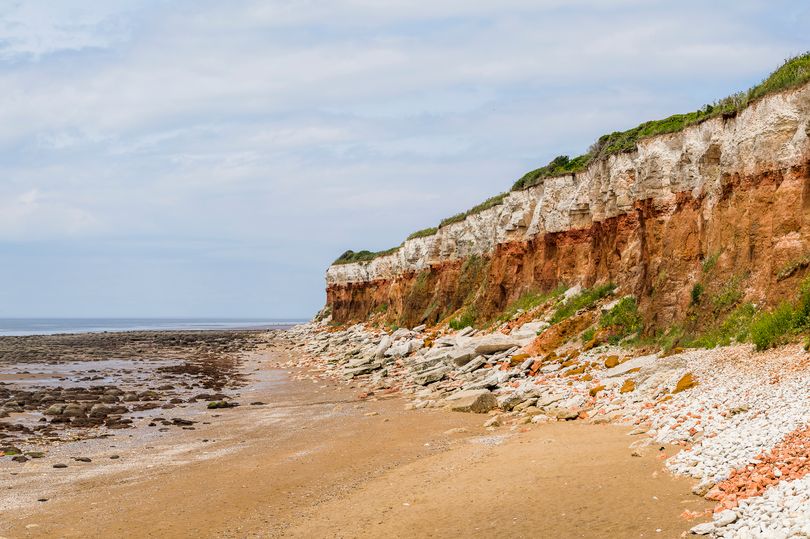
UK BEACH WITH UNIQUE CLIFFS LANDSCAPE AND WW2 SHIPWRECK
Norfolk's Hunstanton South Beach is certainly a popular tourist attraction, with its fun fair, mini golf, and pony rides, all promising fun for the whole family.
But just a short walk up the coastline is the quieter, and sandier, Old Hunstanton Beach. Both Hunstanton beaches are part of a unique stretch of Norfolk's coastline, seeing as they face west when Norfolk itself is on the east coast of the UK.
And while South Beach offers family fun, Old Beach has its own appeal with its unique red and white striped cliffs allowing for a leisurely cliffside stroll, either before or after a relaxing couple of hours sunbathing on the sands.
The unique colouring of these eye-catching cliffs is due to the layers of different colour rocks within the cliff face. The darker colouring is from layers of sedimentary sandstone while the red and white come from limestone, which has been stained with iron in some parts creating the red colour.
Those hoping to find fossils in these layers of rock should stick to the red and white layers, where plenty of fossils have been found. While the only fossils found in the sandstone layer are just a little bit of fossilised wood.
It's not just these unique cliffs that bring visitors to Hunstanton Old Beach, but also the World War Two shipwreck that can still be seen at low tide.
The ship in question, the steam trawler Sheraton, started as a fishing vessel when it was built in 1907, and was commandeered by the Royal Navy when war was declared in 1914.
During the First World War, the ship was used to help find, track, and damage enemy submarines. At the end of the war, the Sheraton was used once again as a trawling vessel.
The ship was then requisitioned by the Navy once again upon the outbreak of the Second World War in 1939. Naval officers added a 6-pounder gun to the vessel and it was then used as an armed patrol vessel on the East Coast.
After the war ended in 1945, the Sheraton was stripped of all of its components and painted bright yellow so it could be used as a Royal Air Force target ship.
Two years later, the Sheraton was moored at Brest Sand, when a severe storm caused it to break from its ties and start drifting, eventually ending up on Old Hunstanton Beach, where it remains to this day.
2024-06-27T15:19:53Z dg43tfdfdgfd